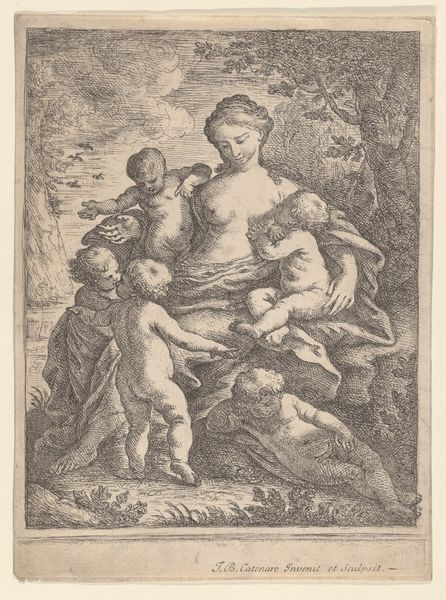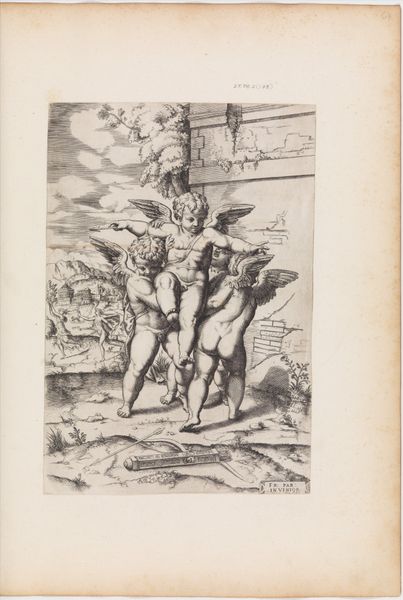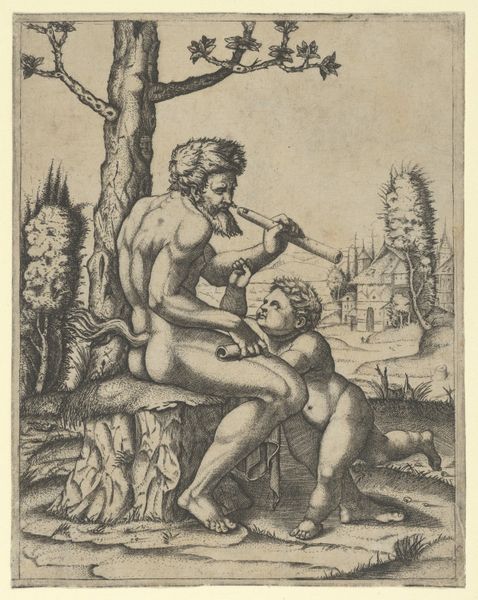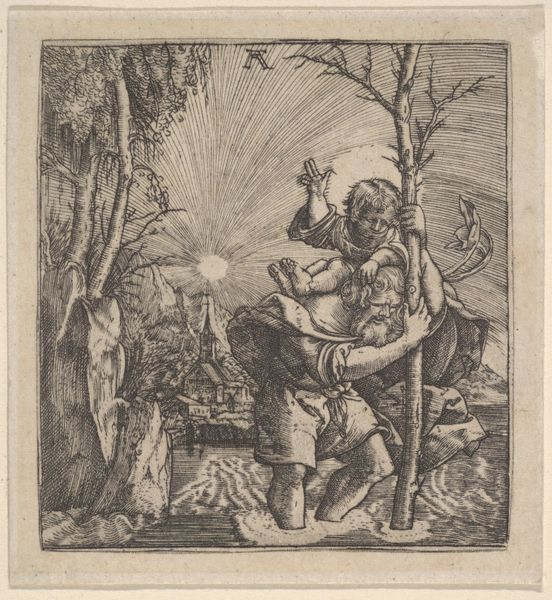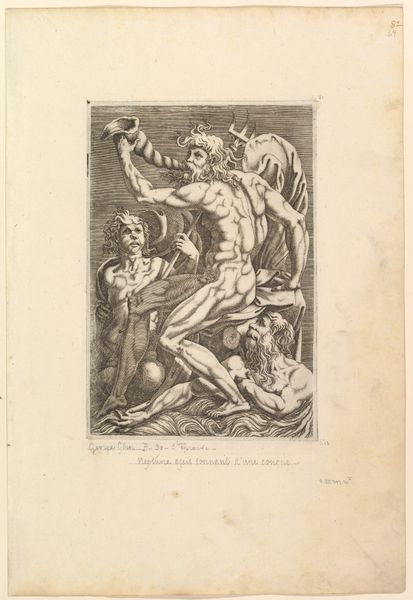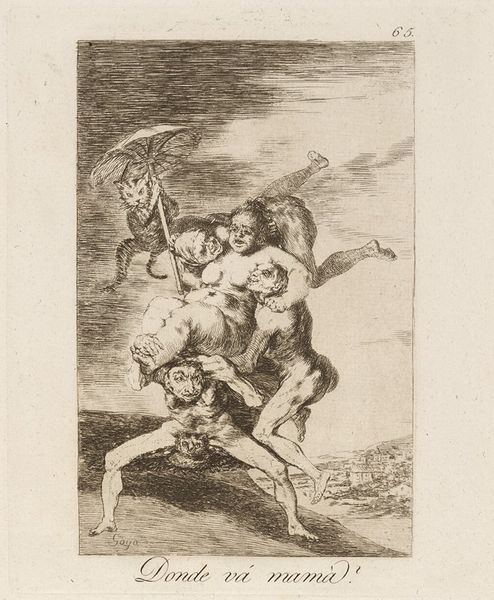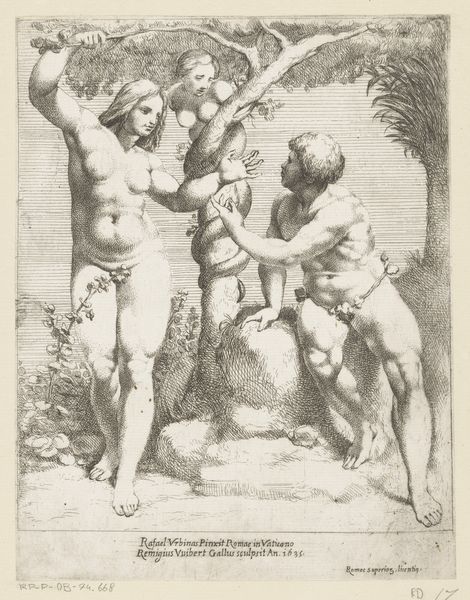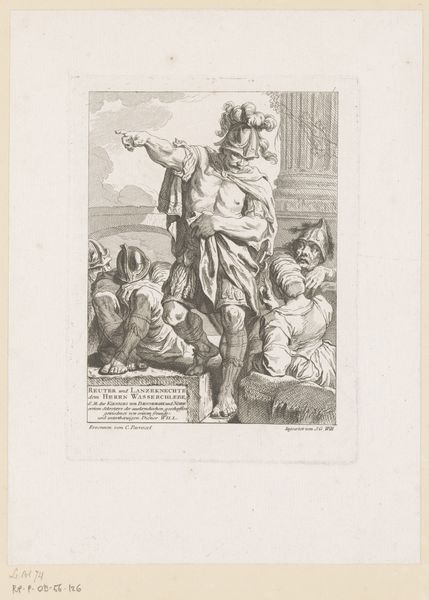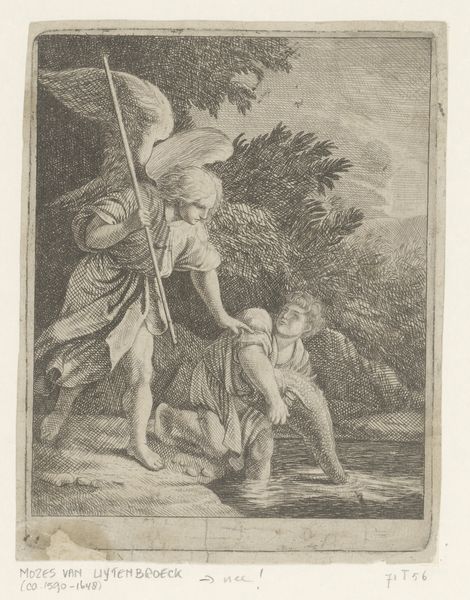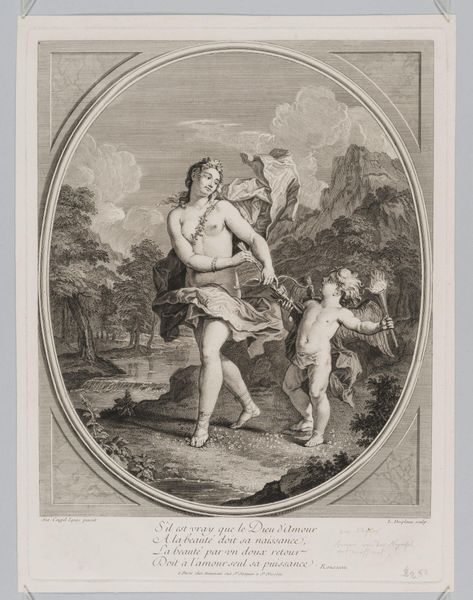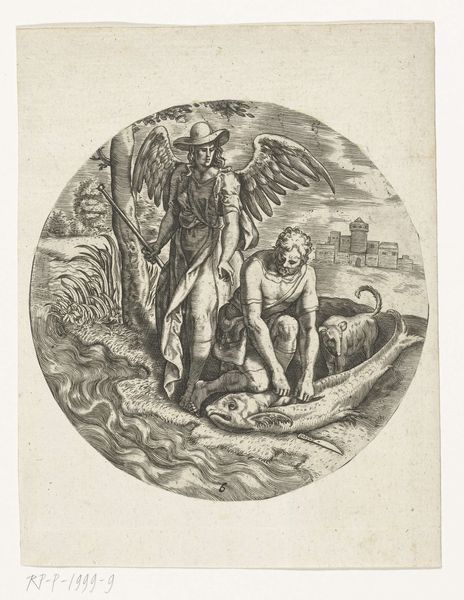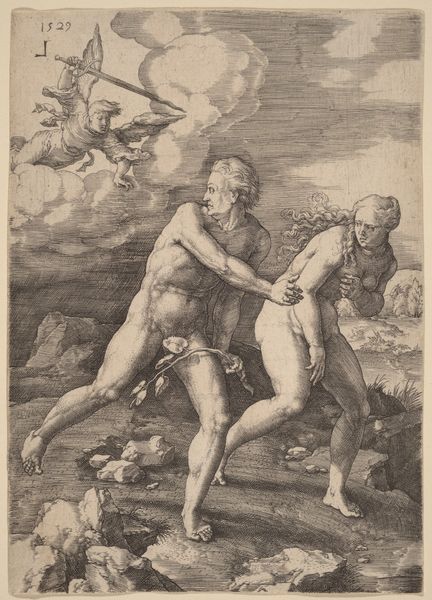
print, engraving
#
narrative-art
# print
#
old engraving style
#
figuration
#
personal sketchbook
#
history-painting
#
italian-renaissance
#
engraving
Dimensions: height 251 mm, width 182 mm
Copyright: Rijks Museum: Open Domain
Editor: Here we have "Aeneas and his Family Fleeing Troy," an engraving made between 1530 and 1560 by Meester van de Dobbelsteen. I am struck by the dramatic contrast between the muscular figures in the foreground and the burning city in the background. What visual elements stand out to you? Curator: Initially, the composition grabs my attention. The strong diagonal formed by Aeneas's body creates a dynamic movement, enhanced by the receding cityscape in the background. Note how the engraver utilizes hatching and cross-hatching to articulate form and shadow, achieving remarkable tonal variation for a black and white print. Editor: I see what you mean. The lines create a real sense of depth. How does the artist create such dynamism with a static image? Curator: It's a play between line and form. The deliberate arrangement of parallel lines, their density, and direction—these construct not only volume but also convey tension and the urgency of the figures' escape. Also, consider how the figure carrying Aeneas's father directs his gaze out, seemingly towards some indeterminate hope. It generates narrative intrigue. Editor: That makes a lot of sense. I didn't initially consider the gaze. Is it just about form, or could there be symbolism involved? Curator: Primarily, my interest lies in dissecting the work’s internal, visual language. One can admire the texture of the marks in their own regard. The burning city exists as a secondary field when regarded through formalism. Though to appreciate this art, one must observe this effect; through doing so one could be reminded that they must accept what they observe and try to dissect their reaction, perhaps by breaking up this memory like this very art-piece does in layers and layers of etching. Editor: That's given me a completely new way of considering engravings. Curator: And for me, the consideration that an image made almost half a millennium ago could still provoke so many inquiries.
Comments
No comments
Be the first to comment and join the conversation on the ultimate creative platform.
